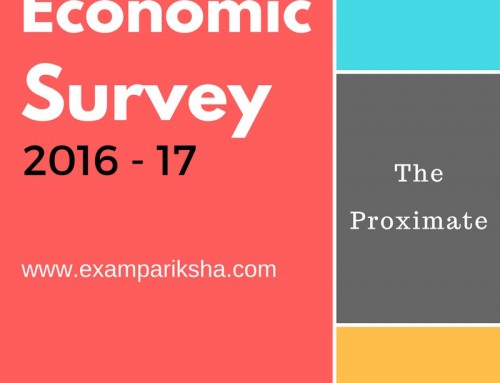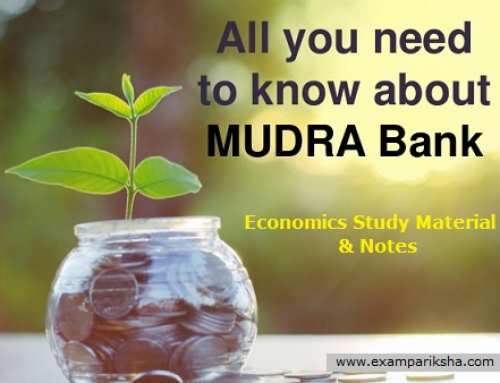India is a developing country and our economy is a mixed economy where the public sector co-exists with the private sector. For an overview of Indian Economy, we should first go through the strengths of Indian economy.
India is likely to be the third largest economy with a GDP size of $15 trillion by 2030.The economy of India is currently the world’s fourth largest in terms of real GDP (purchasing power parity) after the USA, China and Japan and the second fastest growing major economy in the world after China.
Indian economy growth rate is estimated to be around seven to eight percent by year 2015-16.
Let’s look at some facts from history regarding India as an Economy. Dadabhai Naoroji is known as the Father of Indian Politics and Economics, also known as the ‘Grand Old Man of India’. Dadabhai Naoroji was the first to calculate the national income of India. In his book “Poverty and Un-British Rule in India” he describes his theory, i.e. the economic exploitation of India by the British. His theory is popularly called the Economic Drain Theory. Thats when economy of India came into discussion as an entity, prior to that it was just a scramble of princely states and colonisers. Thats all the history there for time being.
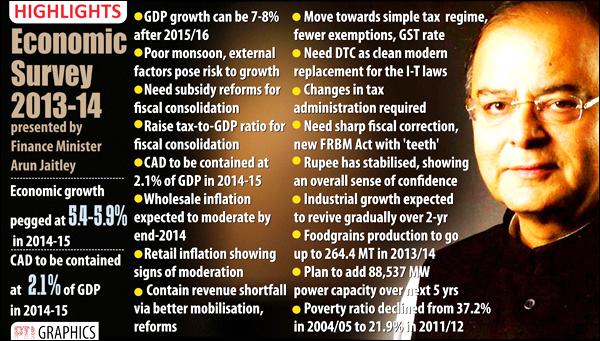
Introduction to Indian Economy:-
- Low per capita income.
- Inequalities in income distribution.
- Predominance of agriculture. (More than 2/3rd of India’s working population is engaged in agriculture. But in USA only 2% of the working population is engaged in agriculture.)
- Rapidly growing population with 1.2% annual change.
- Chronic unemployment (A person is considered employed if he / she works for 273 days of a year for eight hours every day.)Unemployment in India is mainly structural in nature.
- Low rate of capital formation due to less saving rate.
- Dualistic Nature of Economy (features of a modern economy, as well as traditional).Mixed Economy
- Follows Labour Intensive Techniques and activities.
Agriculture in Indian economy:-
While Indian economy introduction is started, the major focus is always on the agriculture sector. This is because Indian economy is based on agriculture.52% of the total population of India depends on agriculture.
According to the 2011-2012 survey of Indian agriculture contributes 14.1% of the Gross Domestic Product (GDP). It was 55.4% in 1950-1951.
India is the second largest sugar producer in the world (after Brazil).
In tea production, India ranks first. (27% of total production in the world).
Wheat production: Uttar Pradesh is the largest producer. Punjab and Haryana is then the second and the third largest producer of wheat.
Rice production:The principal food grain in India is rice. West Bengal is the largest producer. Uttar Pradesh is the second largest producer of Punjab and is the third largest producer of rice.
<< Read more about Agriculture sector here>>
National Income:The national income is the sum total of the value of all the final goods produced and services of the residents of the country in an accounting year.
CSO: Central Statistical Organization is under the Department of Statistics. Govt. of India is responsible for estimating the national income.CSO was founded by Prof. Mahalanobis. CSO is assisted by the National Sample Survey Organization (NSSO) in estimating National Income.
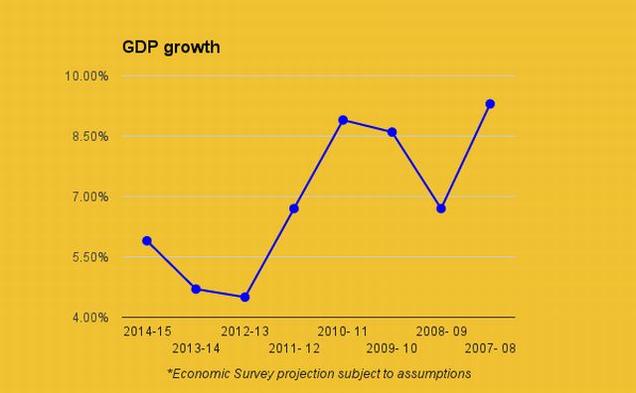 Gross Domestic Product (GDP) is the money value of final goods and services produced in the domestic
Gross Domestic Product (GDP) is the money value of final goods and services produced in the domestic
territory of a country during the accounting year.
In India Gross Domestic Product (GDP) is larger than national income because net factor income from abroad
is negative, i.e. foreign payment is larger than the foreign receipt.
Net National Product (NNP) at market prices = Gross National Product at Market Prices – Depreciation
<< Read about Literature in Ancient India here >>
Sectors of Indian Economy:-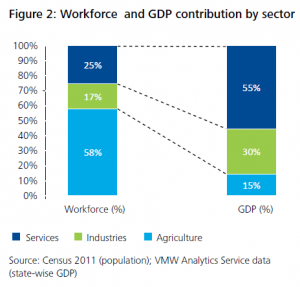
- Primary Sector: When the economic activity depends mainly on exploitation of natural resources then
that activity comes under the primary sector. Agriculture and agriculture related activities are the primary sectors of economy. - Secondary Sector: When the main activity involves manufacturing then it is the secondary sector. All industrial production where physical goods are produced come under the secondary sector.
- Tertiary Sector: When the activity involves providing intangible goods like services then this is part of
the tertiary sector. Financial services, management consultancy, telephony and IT are examples of service sector.
<< Read about UNESCO World Heritage sites in India here >>
Other Classifications of Economy:-
In Indian economy introduction, the sectors of economy based on other basis is also required to get a clear picture of the strengths of Indian Economy.
- Organized Sector: The sector which carries out all activity through a system and follows the law of the
land is called organized sector. Moreover, labour rights are given due respect and
wages are as per the norms of the country and those of the industry. Labour working organized sector get the
benefit of social security net as framed by the Government. Certain benefits like provident fund, leave
entitlement, medical benefits and insurance are provided to workers in the organized sector. These security
provisions are necessary to provide source of sustenance in case of disability or death of the main
breadwinner of the family without which the dependents will face a bleak future. - Unorganized Sector: The sectors which evade most of the laws and don’t follow the system come under
unorganized sector. Small shopkeepers, some small scale manufacturing units keep
all their attention on profit making and ignore their workers basic rights. Workers don’t get adequate salary
and other benefits like leave, health benefits and insurance are beyond the imagination of people working in
unorganized sectors. - Public Sector: Companies which are run and financed by the Government comprises the public sector.
After independence India was a very poor country. India needed huge amount of money to set up
manufacturing plants for basic items like iron and steel, aluminium, fertilizers and cements. Additional
infrastructure like roads, railways, ports and airports also require huge investment. In those days Indian
entrepreneur was not cash rich so government had to start creating big public sector enterprises like SAIL
(Steel Authority of India Limited), ONGC(Oil & Natural Gas Commission). - Private Sector: Companies which are run and financed by private people comprise the private sector.Companies like Hero Honda, Tata are from private sectors.




